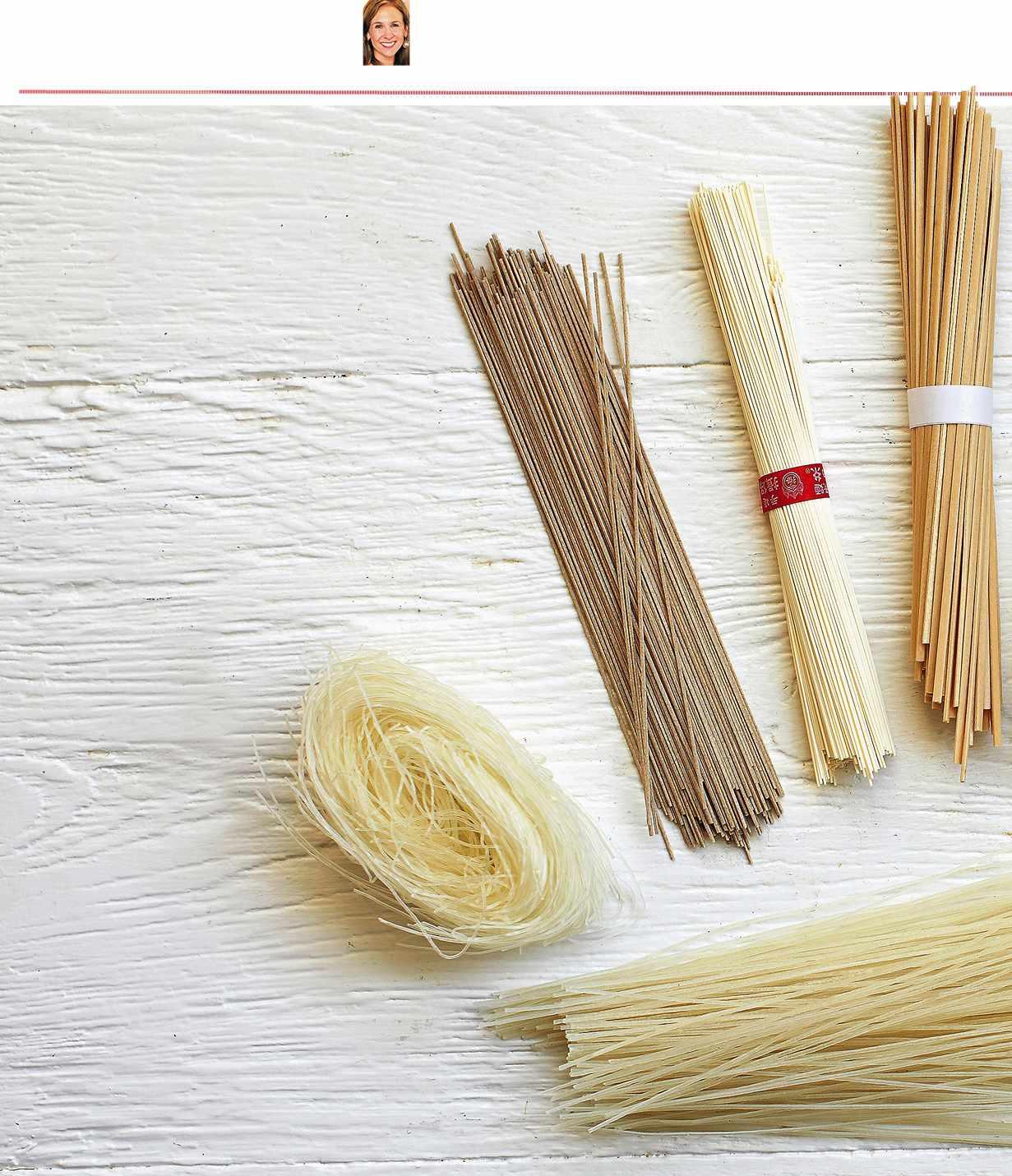
2 minute read
Storecupboard heroes Noodles
from saivohteoicve
Storecupboard heroes
Noodles The numerous shapes and varieties of noodles can be overwhelming. Jennifer Joyce, food writer and Asian cookery expert, explains how each type should be used
Advertisement
Photograph STUART OVENDEN
Udon noodles
A favourite in Japanese cuisine, these thick, chewy noodles have a springy bite and are eaten in stir-fries (yaki udon), soups or served cold with a dressing. You need to cook them in a large pan as they are very starchy and can easily stick together. The thickness of the noodles varies, so cook following pack instructions, then rinse well in hot water. Most supermarkets sell the dried variety and also a ready-to-use or ‘straight-to-wok’ type, which is great for stir-fries. The dried noodles have a better favour, but – for the best quality – visit an Asian food store and try frozen udon noodles. They have an amazing toothsome texture and can be boiled straight from frozen.
Soba noodles
Made from both ground buckwheat four and wheat four, these pale brown Japanese noodles have a nutty taste and chewy texture. Mainly sold dried, cook by boiling for 4 minutes, then rinse in hot water to remove the extra starch. Traditionally, they are served cold for dipping in sauces or mixed with a soy, sesame or miso dressing. Many clear broth soups also feature them. Find them in supermarkets, health food shops or Asian stores. Look out for cha soba, made with matcha green tea powder.
Somen noodles
These thin white Japanese noodles, made from wheat, are usually sold dried in elegant bundles. They need to be boiled for about 4 minutes, then rinsed in warm water to remove the extra starch. Typically they are served in a soup or in a cold salad with sesame dressing. Selected health food shops sell them, or try Asian and Japanese stores.
Vermicelli rice noodles
These are the thinnest variety of rice noodle and are sold dried in most supermarkets or Asian food shops. They take just 1-2 minutes to soften in kettle-hot water and can be used immediately after draining. They are ideal for South-east Asian salads or soups because they are porous, so they soak up the favours. Also very sturdy for stir-fries such as Singapore noodles.
Vietnamese bun rice noodles
Confusingly, these are also called vermicelli, but are slightly thicker and more cylindrical. ‘Bun’, meaning noodle in Vietnamese, is most commonly seen in bun cha – a dish of grilled pork served over noodles with a lime & chilli dressing. They are also used in soups and salads. To cook, soak in just boiled water for 4-5 minutes, then drain. You will need to make a trip to an Asian store to get these. If you can’t fnd them, simply use regular vermicelli rice noodles.










